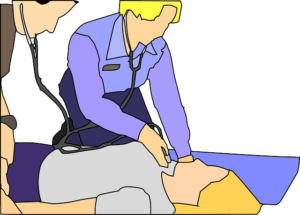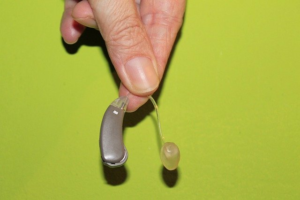BEYOND LOCAL: New tech could allow chewing to charge hearing aid batteries – BradfordToday
Whenever we eat, speak or yawn, the movement of our jaw deforms the ear canal. These deformations could be converted into electrical energy used to power in-ear technology
This article by Michel Demuynck, École de technologie supérieure (ÉTS) originally appeared on the Conversation and is published here with permission.
Hearing aids are essential for people with hearing loss. But hearing aids have an Achilles heel: their power supply is expensive and…….
Whenever we eat, speak or yawn, the movement of our jaw deforms the ear canal. These deformations could be converted into electrical energy used to power in-ear technology
This article by Michel Demuynck, École de technologie supérieure (ÉTS) originally appeared on the Conversation and is published here with permission.
Hearing aids are essential for people with hearing loss. But hearing aids have an Achilles heel: their power supply is expensive and environmentally unfriendly.
The good news is that researchers have found an renewable, alternative energy source that might be able to power hearing aids. The energy is produced inside the ear, and harvested using an earplug embedded with sensors.
My PhD project consists of modelling the deformations of the ear canal created by the movements of the jaw. My results will contribute to a better evaluation of the energy that might come from these deformations.
The problem with hearing aids
To understand the problem with hearing aids, consider the daily life of Clara, a 24-year-old architecture student, who has been wearing hearing aids since she was eight years old. When the battery that powers her prosthesis runs out, Clara loses hearing and is cut off from the world.
A part of her brain is constantly on alert to make sure she has a spare box of batteries on hand. In addition to this hassle, the battery is an economic burden. Considering her battery consumption and the price per battery, Clara estimates that in 15 years, the batteries cost more than purchasing a new hearing aid.
The same goes for the cost to the environment. The rare metals used in batteries are not recyclable at this time, and many batteries end up in landfills.
Rechargeable batteries are now widely used for wireless headphones, making it surprising that hearing aids have not embraced this technology. It might sound strange to compare wireless earphones with hearing aids, but in terms of sophistication, the only advantage earphones have over hearing aids is the audio amplifier, which makes it possible to increase sound volume in the ear.
The big difference is price. A single hearing aid costs $1,000-2,000 compared to $100-300 for a pair of headphones. The business model, which involves manufacturers, medical insurers, hearing care professionals and consumers, keeps the price hight.
In short, it’s fair to say that Clara’s financial and environmental balance sheets are not positive. But the revolution is coming! She may soon be able to power her hearing aids with the movement of her jaw.
Our ear canals create energy
Here’s a small experiment: insert your little finger in your ear, then open and close your mouth. …….







